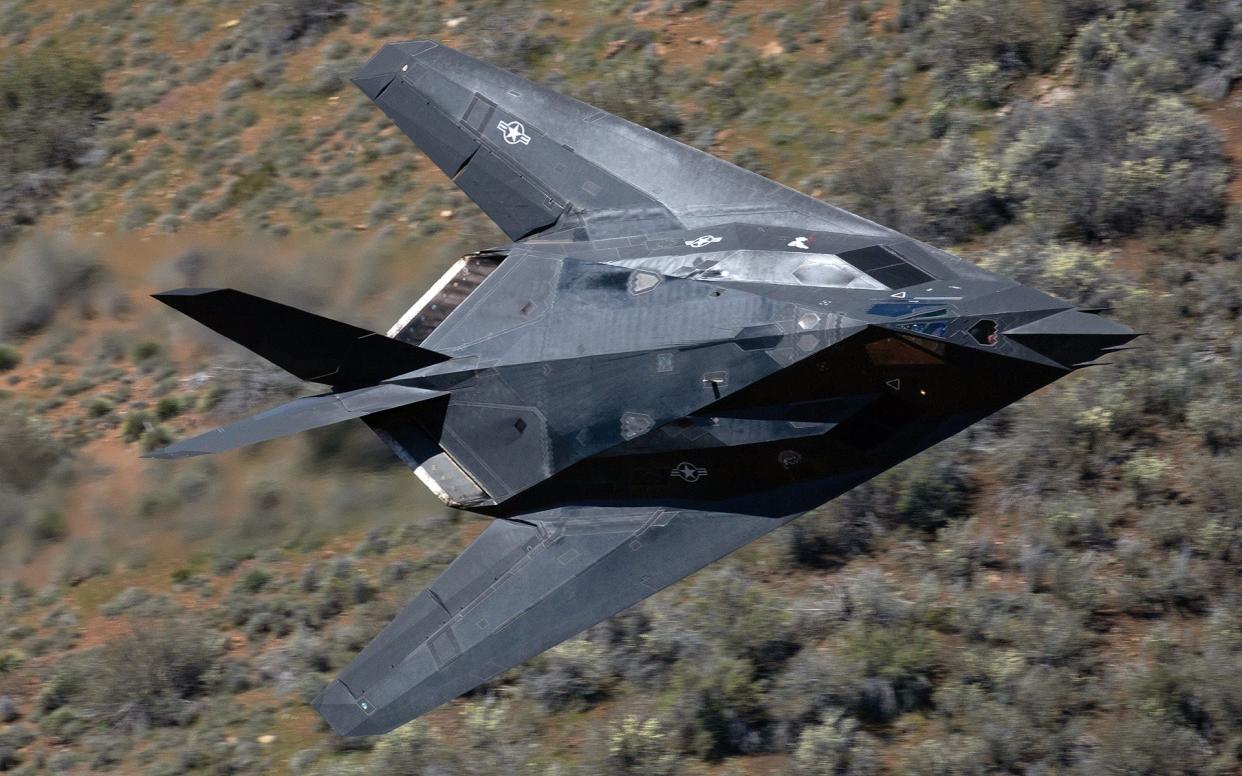F-117 Nighthawks Caught Roaring Through A Canyon In Awesome Images

At least some of the U.S. Air Force's fleet of F-117 Nighthawk stealth attack jets continue to enjoy a very active 'retirement' and are set to keep flying for around another decade or so. An aviation photographer who goes by @stinkjet on Instagram was kind enough to share pictures with us of two of these aircraft recently seen zooming along at very low altitude over California.
"I took the images from a hilltop along the Sidewinder Low Level training route in southern California on Friday, April 21st," @stinkjet told The War Zone. "The route is used by many military aircraft for low level training, and I happened to be lucky enough to be there when two F-117s came through."
Images Courtesy of Aviation Photographer @stinkjet on Instagram
The Sidewinder route sits in the vast R2508 Range Complex and part of it runs between Owens Valley and Panamint Valley. Up until a deadly crash of a Super Hornet in 2019, this included military aircraft blasting through Star Wars Canyon, also known as Rainbow Canyon. That was before low-level access for military planes to the crevasse was restricted following the incident. Still, civilian aircraft make that famous run from time to time. Regardless, that is just one part of the route, and as the images of the F-117s show, some great opportunities exist elsewhere along it.
@stinkjet was also able to capture some video of the F-117s, seen in the Tweet below.
F-117s ripping it up low-level through sidewinder in R-2508😎🤙 (Huge thanks to 📷Alex ”stinkjet” for sharing! https://t.co/sxpPSTX5Ud ) pic.twitter.com/gZAdSZWAbP
— Thenewarea51 (@thenewarea51) April 25, 2023
F-117s have been highly active in recent years in this same area, although catching them running at low-level is somewhat rare. Photographing them flying deep through steep canyons is even more so. Part of the work these aircraft do is to act as 'low-observable' control variables to test new sensors and this area offers ideal conditions, especially for low-level maneuvers. In fact, not far from here is where the F-117 program came somewhat out of the dark, giving photographers an incredible series of encounters, before expanding the scope and profile of the operations significantly. This is also how the unit's Dark Knights moniker came into focus.
The F-117s in this recent imagery don't appear to have any unusual or novel features, at least from what can be seen. That being said, the Nighthawk's overall look remains as distinctive as ever.
The Air Force officially retired its remaining F-117s in 2008, after 25 years of service, including participation in numerous combat operations. The surviving jets were subsequently placed in storage at the secretive Tonopah Test Range Airport in Nevada.
Despite a Congressional mandate to destroy all of the remaining aircraft, it became clear some years ago now that the Air Force was still flying at least some of the F-117s. The Air Force has since publicly acknowledged the use of a number of Nighthawks for various research and development, test and evaluation, and training purposes.
The still-flying F-117s provide valuable dissimilar stealth platforms that are useful in a variety of contexts. At least one of the jets has been notably observed in the past wearing what looks to be a mirror-like coating. Other U.S. military F-22 Raptor and F-35 stealth fighters, as well as Northrop Grumman Model 401 "Son of Ares" test jets, have been observed with similar finishes in recent years. This may all be linked to work on advanced infrared sensors or directed energy weapons, or countermeasures to defeat those kinds of systems.
As of January, the Air Force told The War Zone it still had 45 F-117s, though it's not clear how many were flyable then or still are. The service also confirmed at that time that it expects to continue operating at least a portion of that fleet through 2034. Its plan is still to get rid of all of the remaining Nighthawks eventually, but there does not appear to be a fixed timeline for this yet.
At least 10 of the remaining F-117s have been or are set to be put on public display, the Air Force also told us in January. Doing this requires a lengthy specialized demilitarization process to remove still-classified or otherwise sensitive components, as well as toxic materials, from the aircraft, as we have explored in detail previously.
Whatever the final fate of the Air Force's F-117s might be, @stinkjet's recent pictures and video highlight how a number of the jets are still very much in use and will be for years to come.
Contact the author: joe@thedrive.com

